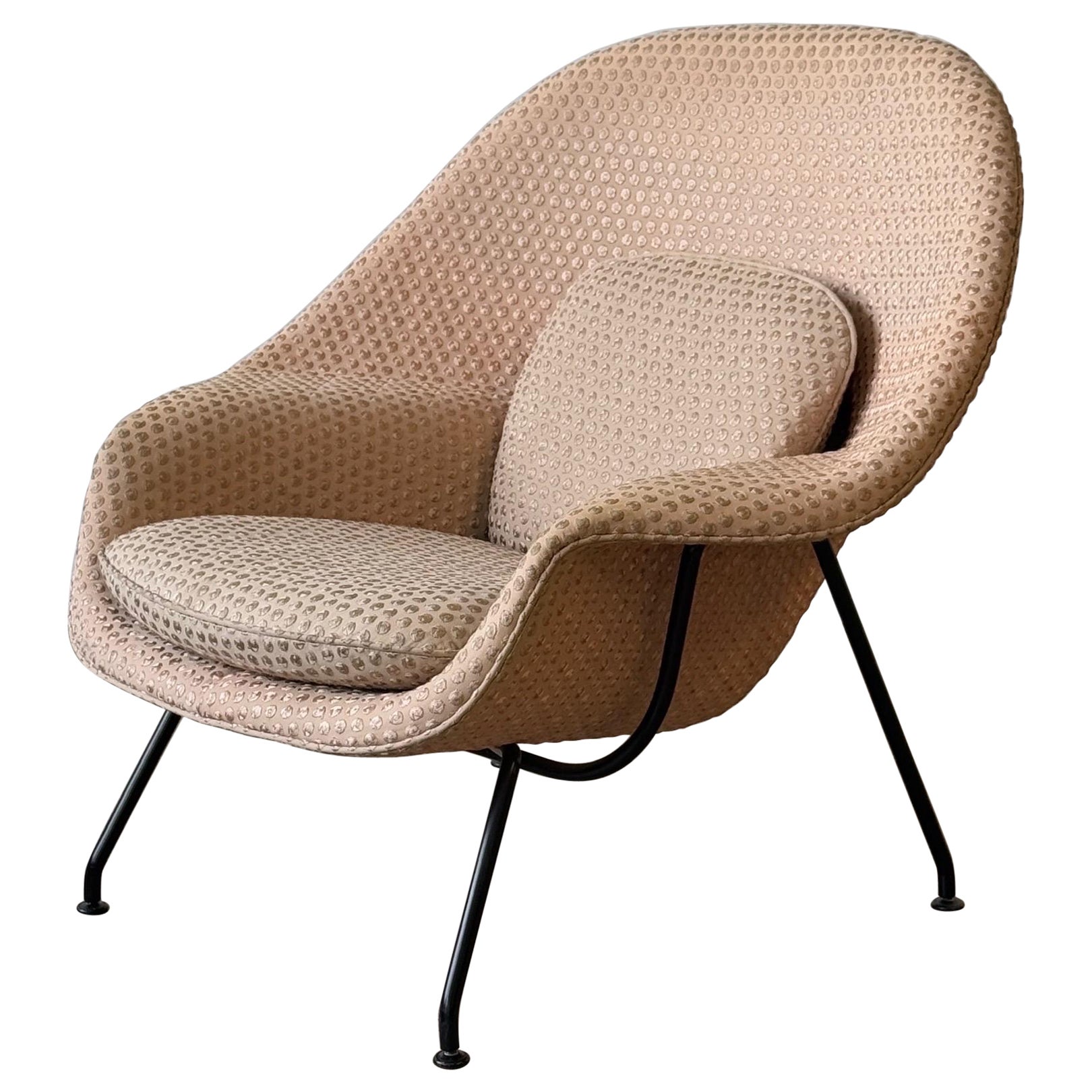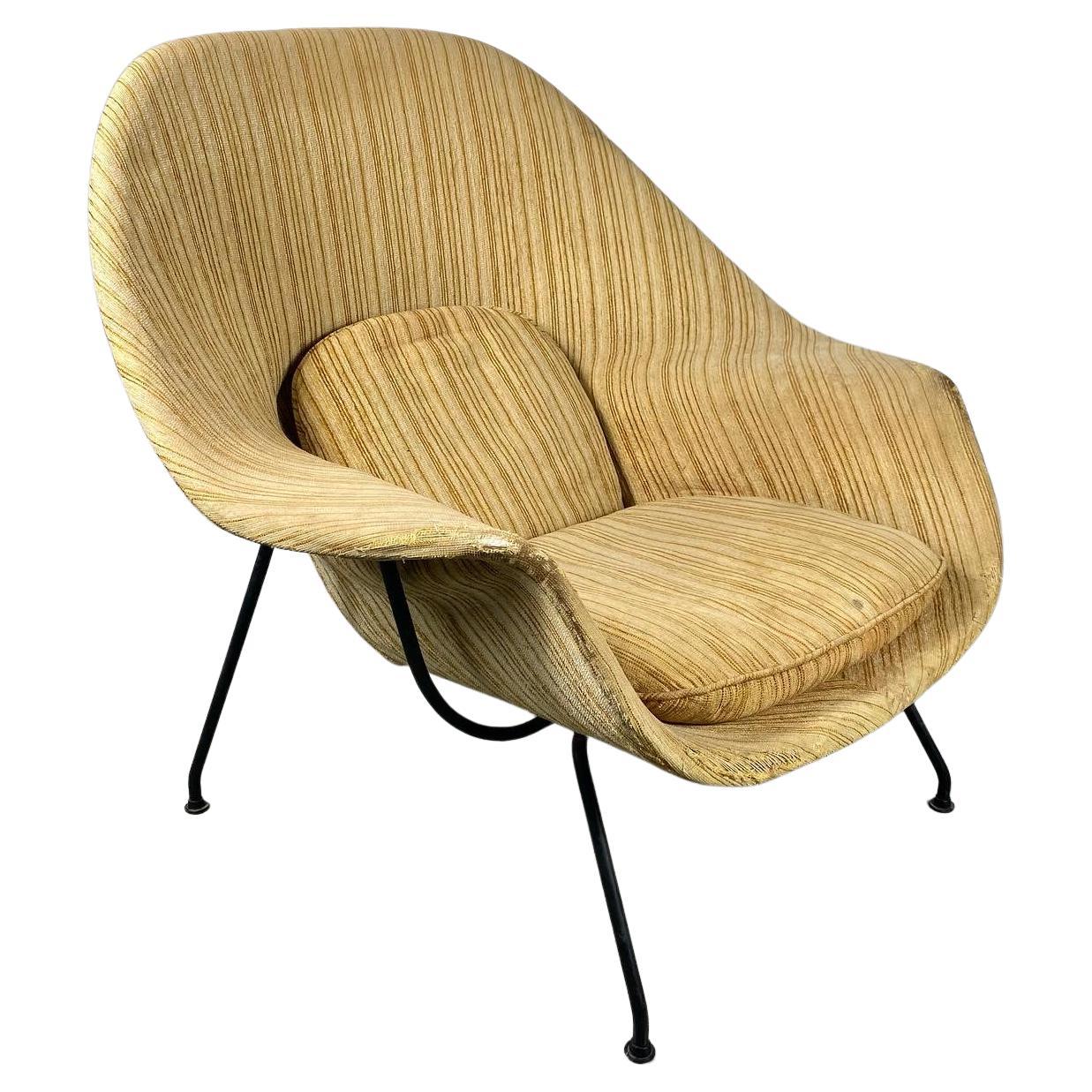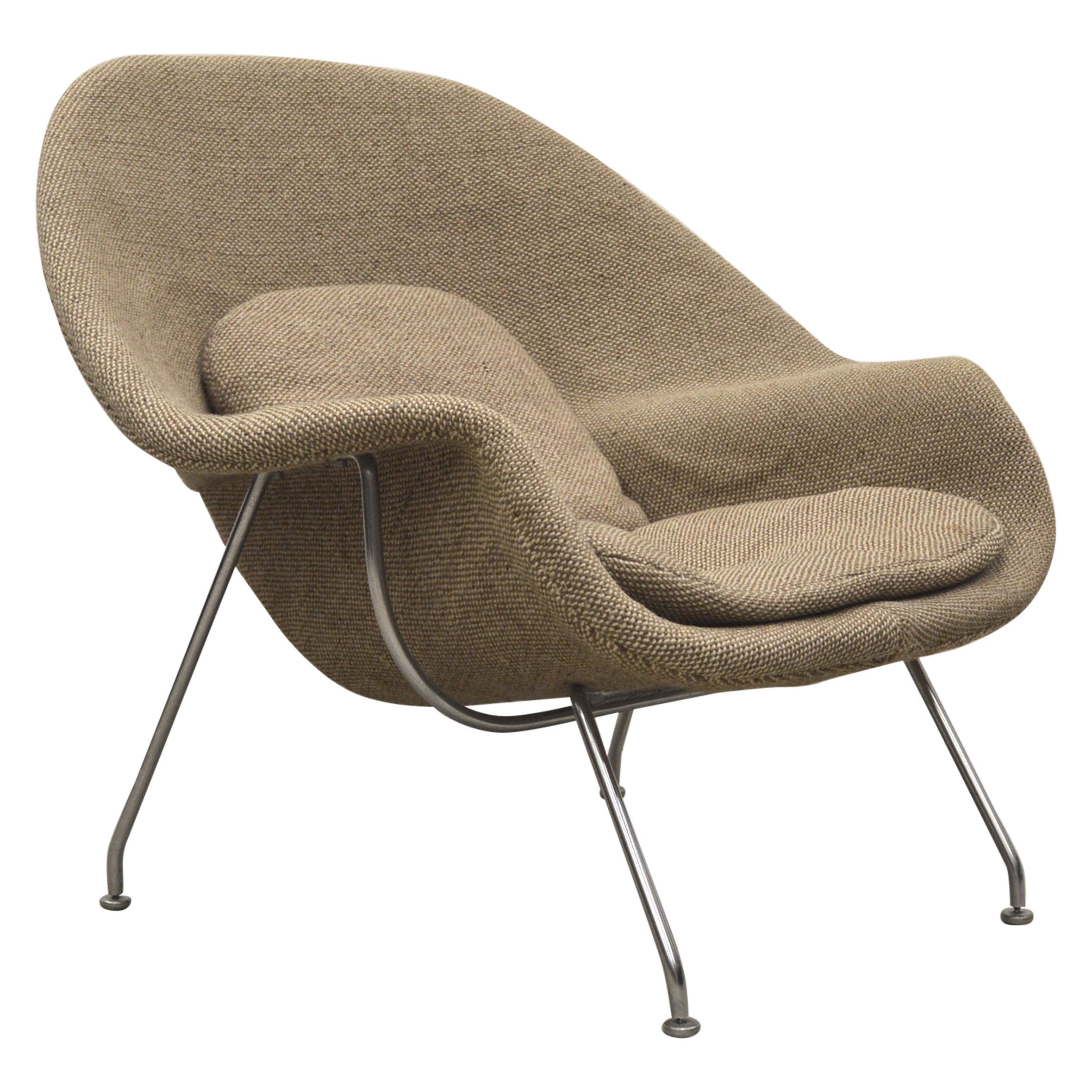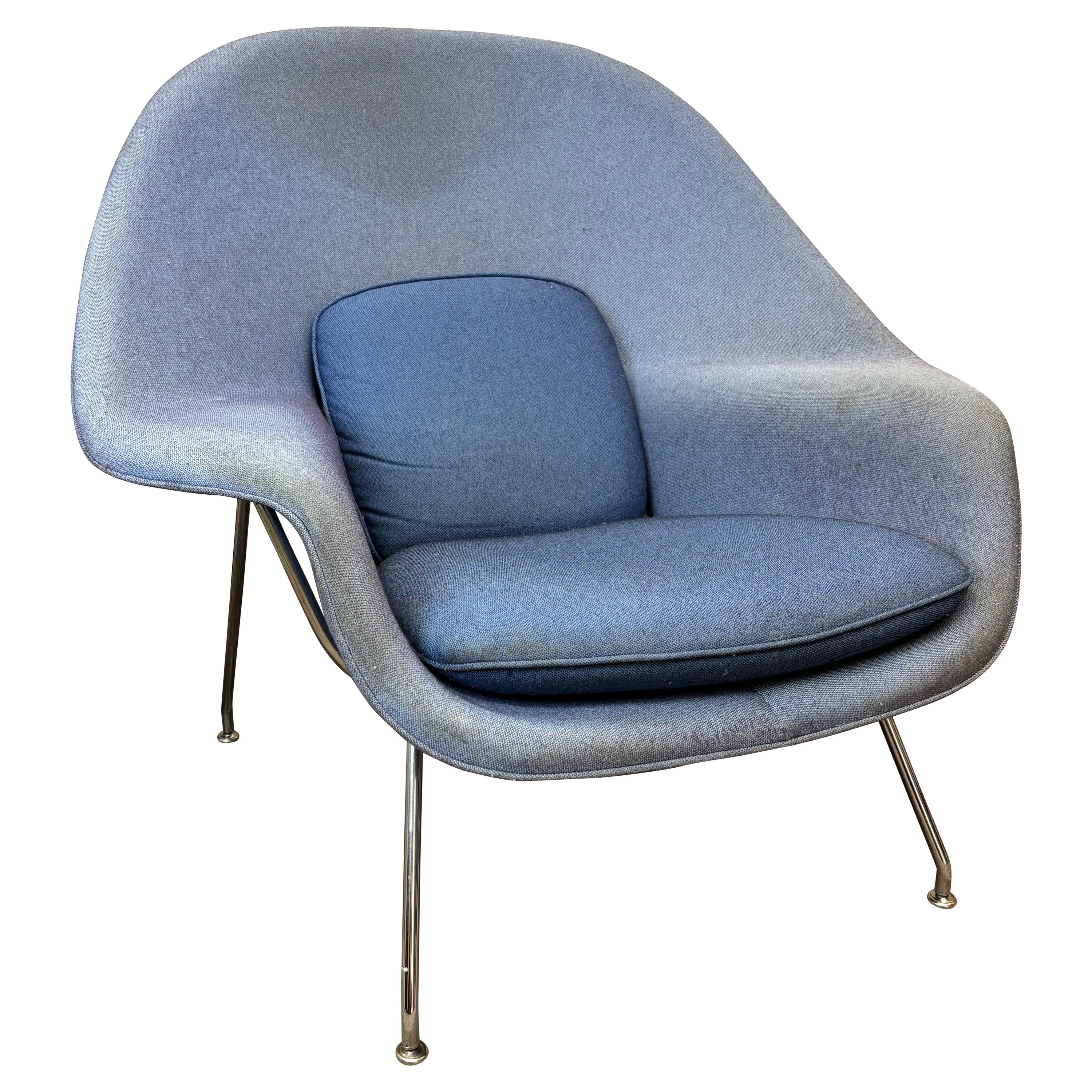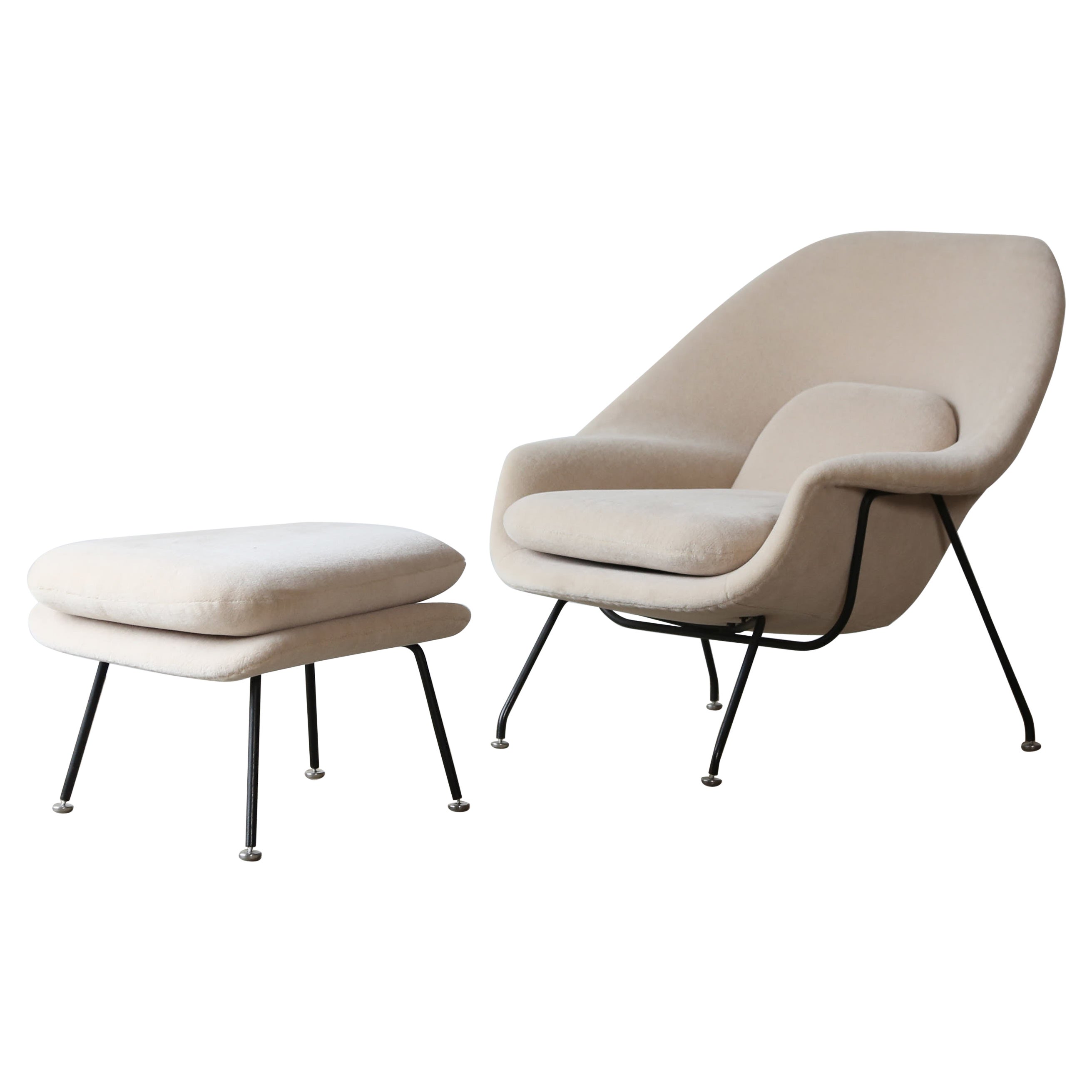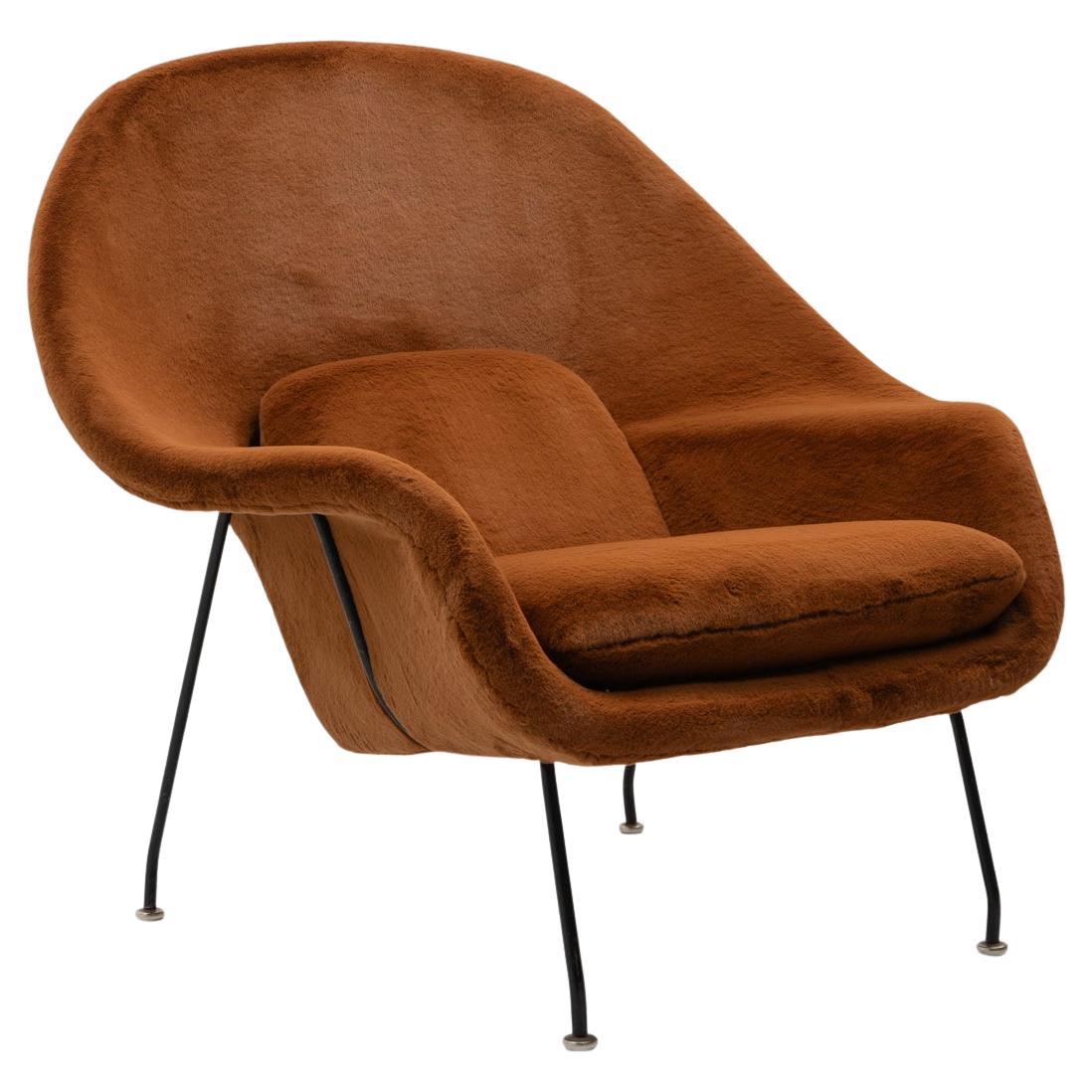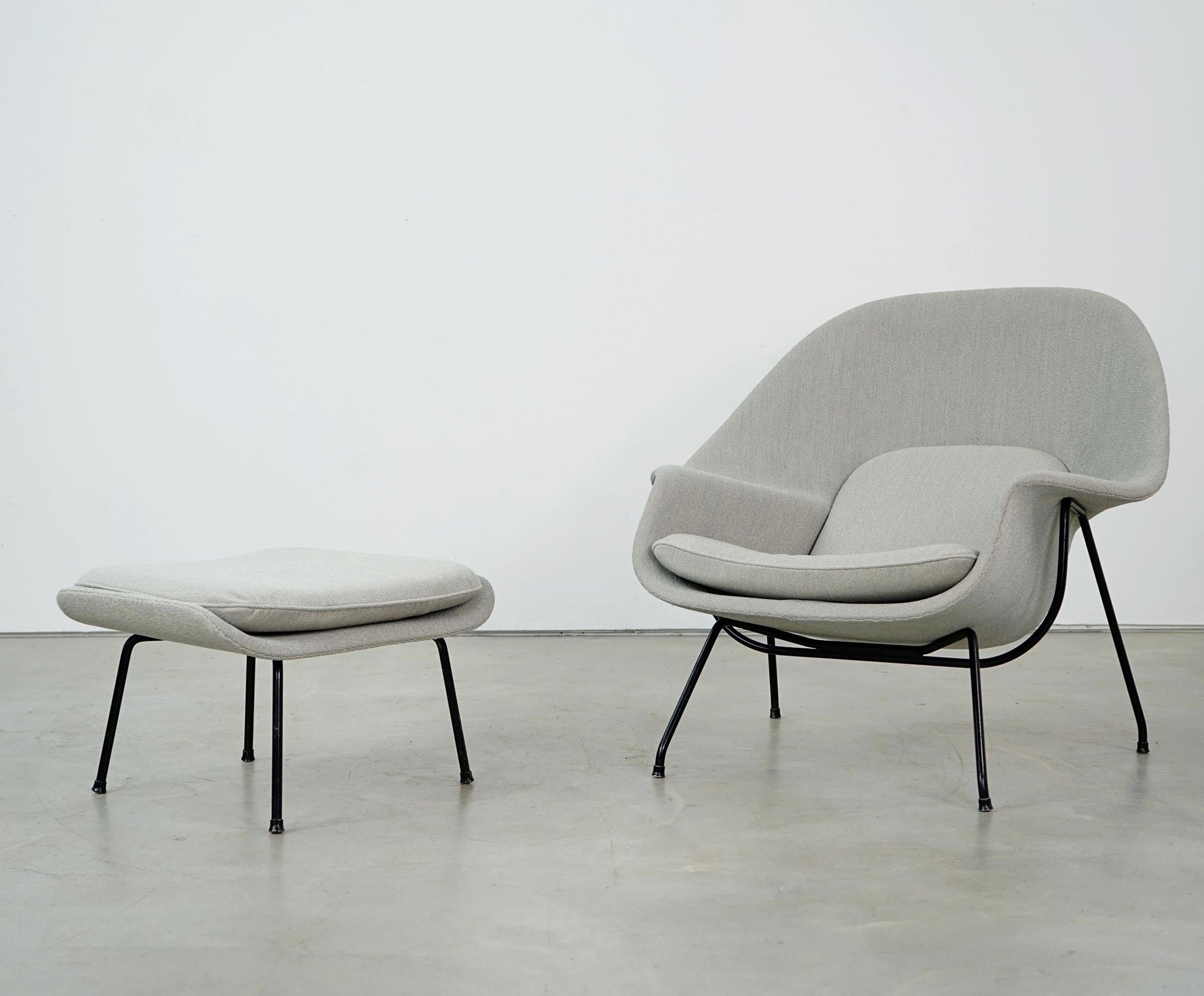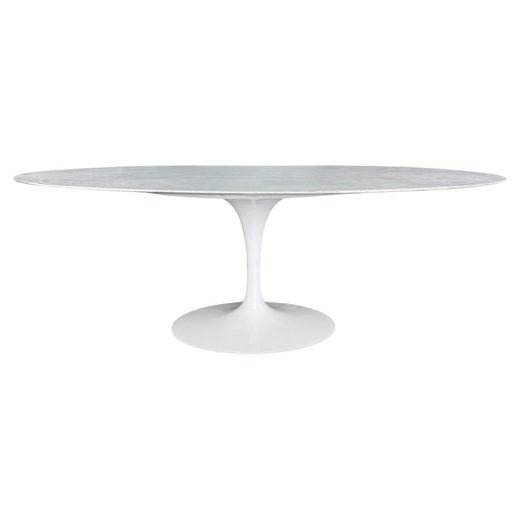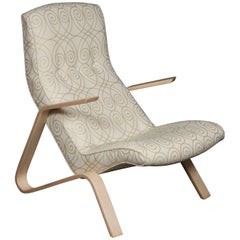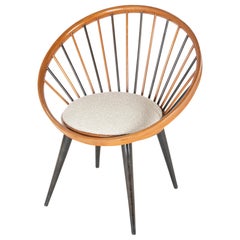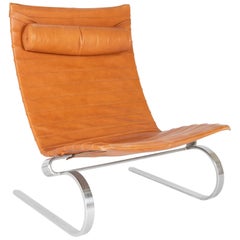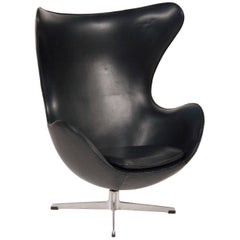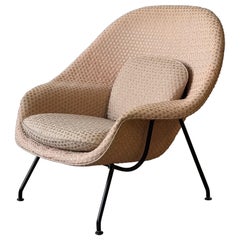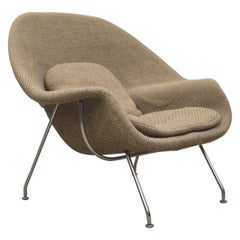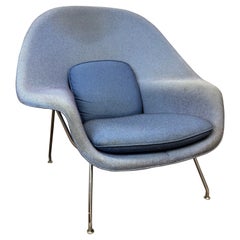Early Womb Chair Designed for Eero Saarinen
About the Item
- Creator:Knoll (Manufacturer),Eero Saarinen (Designer)
- Design:
- Dimensions:Height: 35 in (88.9 cm)Width: 40 in (101.6 cm)Depth: 39 in (99.06 cm)Seat Height: 16 in (40.64 cm)
- Style:Mid-Century Modern (Of the Period)
- Materials and Techniques:
- Place of Origin:
- Period:
- Date of Manufacture:1952
- Condition:Wear consistent with age and use. Ready to place. Newly upholstered.
- Seller Location:Stamford, CT
- Reference Number:Seller: Avery & Dash 1stDibs: LU918618822082
Womb Chair
Shortly after Eero Saarinen (1910–61) joined Florence Knoll at the manufacturer she had established with her husband, Hans, she presented the Finnish-born designer with a serious request: to create for her the world’s most comfortable chair, something, Saarinen recalls, that felt like “a basket full of pillows.”
Presented with the challenge, Saarinen went primal. What, the designer figured, better signifies the very essence of comfort than the womb? "It was designed on the theory that a great number of people have never really felt comfortable and secure since they left the womb,” the designer said of his Womb chair, which began production in 1948. “The chair is an attempt to rectify this maladjustment in our civilization.”
The Womb chair, like many other masterpieces of modernist design, is genius in its simplicity. Comprised of few materials, the chair consists of a fabric-wrapped, molded fiberglass bucket set atop legs of tubular steel. The skeletal look of the frame keeps the chair from appearing bulky despite the seat’s oversized silhouette, which makes it inviting to people of all sizes.
"There seemed to be a need for a large and really comfortable chair to take the place of the old overstuffed chair,” Saarinen once said of his concept.
Indeed, despite being indisputably comfortable, the Womb doesn’t require an abundance of padding and tufting — instead, its comfort owes to a perfectly shaped shell of fiberglass. This new approach to ergonomics both reflected Saarinen’s love of streamlined forms and echoed the kind of experimental work being done by American designers Charles and Ray Eames, who, like Florence Knoll, were friends he'd made at Cranbrook Academy of Art while he taught there.
It didn’t take long for the chair to become a cultural phenomenon; in the decade following its release, it appeared in a Coca-Cola commercial, a New Yorker cartoon and in a Norman Rockwell painting on the cover of The Saturday Evening Post. Today, Knoll offers the seat in some 15 upholstery options, and when Saarinen’s famous TWA terminal reopened as a hotel in 2019, Womb chairs featured prominently in the guest rooms, continuing the legacy of this classic design.
Eero Saarinen
Through his work as an architect and designer, Eero Saarinen was a prime mover in the introduction of modernism into the American mainstream. Particularly affecting were the organic, curvilinear forms seen in Saarinen’s furniture and his best-known structures: the gull-winged TWA Flight Center at John F. Kennedy airport in New York (opened 1962), Dulles International Airport in Virginia (1962) and the Gateway Arch in St. Louis, Missouri (1965).
Saarinen had a peerless modernist pedigree. His father, Eliel Saarinen, was an eminent Finnish architect who in 1932 became the first head of the Cranbrook Academy of Art in suburban Detroit. The school became synonymous with progressive design and decorative arts in the United States, and while studying there the younger Saarinen met and befriended several luminaries of mid-century modernism, among them Harry Bertoia and Charles and Ray Eames.
At Cranbrook, Saarinen also met Florence Schust Knoll, who, as director of her husband Hans Knoll's eponymous furniture company, would put Saarinen’s best designs into production. These include the Grasshopper chair, designed in 1946 and so named because its angled bentwood frame resembles the insect; the Tulip chair (1957), a flower-shaped fiberglass shell mounted on a cast-aluminum pedestal; and the lushly contoured Womb lounge chair and ottoman (1948). In his furniture as in his architecture, the keynotes of Eero Saarinen’s designs are simplicity, strength and grace.
Find vintage Eero Saarinen tables, chairs and other furniture on 1stDibs.
- ShippingRetrieving quote...Shipping from: Stamford, CT
- Return Policy
More From This Seller
View AllVintage 1960s Mid-Century Modern Armchairs
Vintage 1960s Swedish Mid-Century Modern Chairs
Birch
Vintage 1970s Danish Modern Chairs
Chrome
Vintage 1960s Chairs
Leather
Mid-20th Century Swedish Mid-Century Modern Lounge Chairs
Leather
Mid-20th Century Danish Mid-Century Modern Office Chairs and Desk Chairs
Metal
You May Also Like
Early 2000s American Mid-Century Modern Chairs
Fabric
Vintage 1950s American Mid-Century Modern Lounge Chairs
Iron
Mid-20th Century American Lounge Chairs
Aluminum
1990s American Mid-Century Modern Lounge Chairs
Metal
Mid-20th Century American Mid-Century Modern Lounge Chairs
Steel
Vintage 1960s Swiss Mid-Century Modern Chairs
Metal
